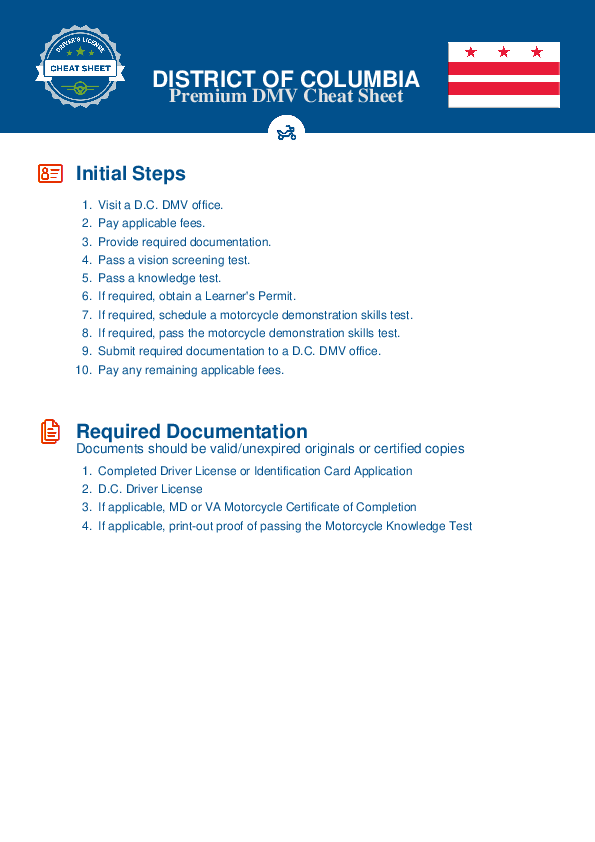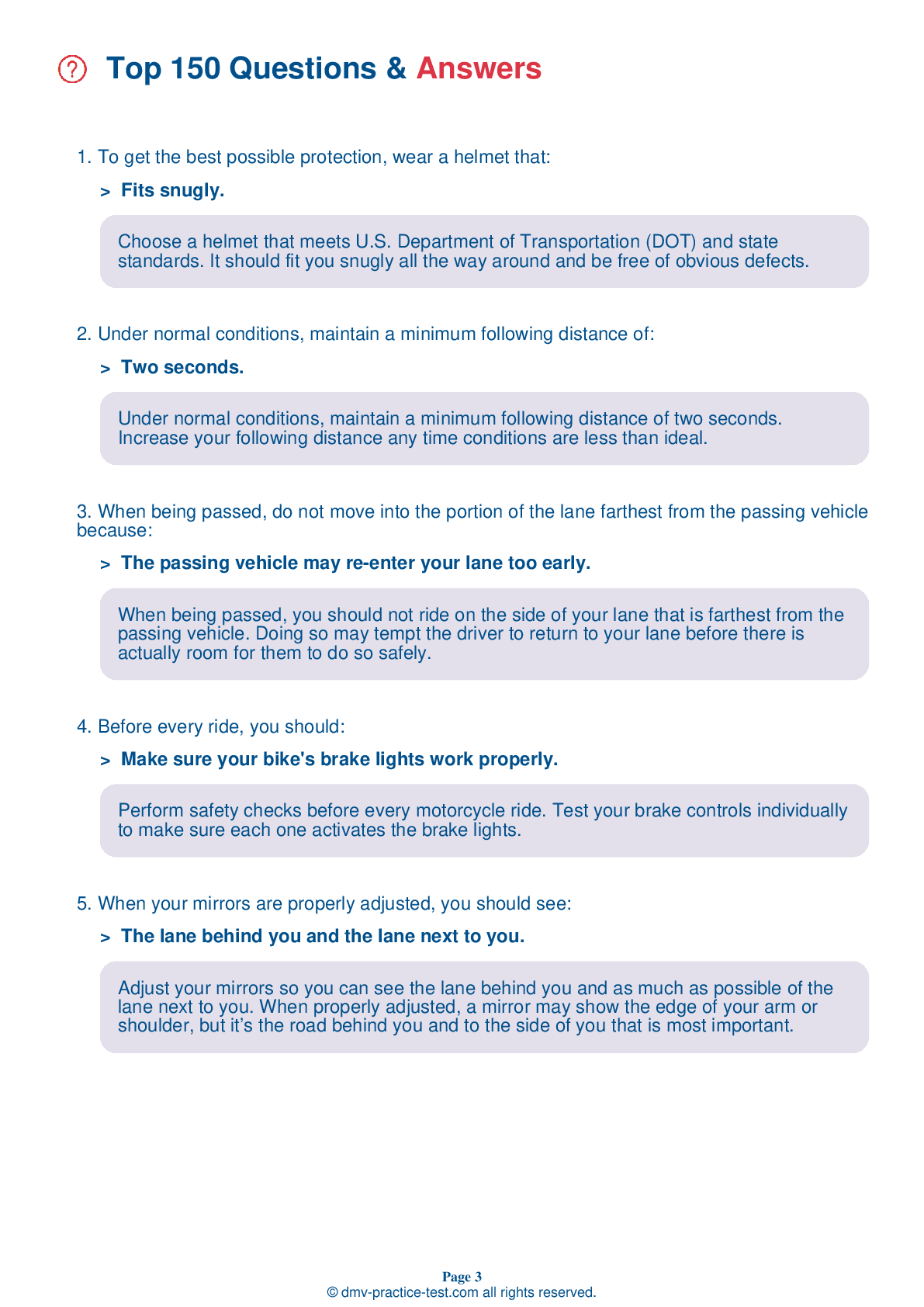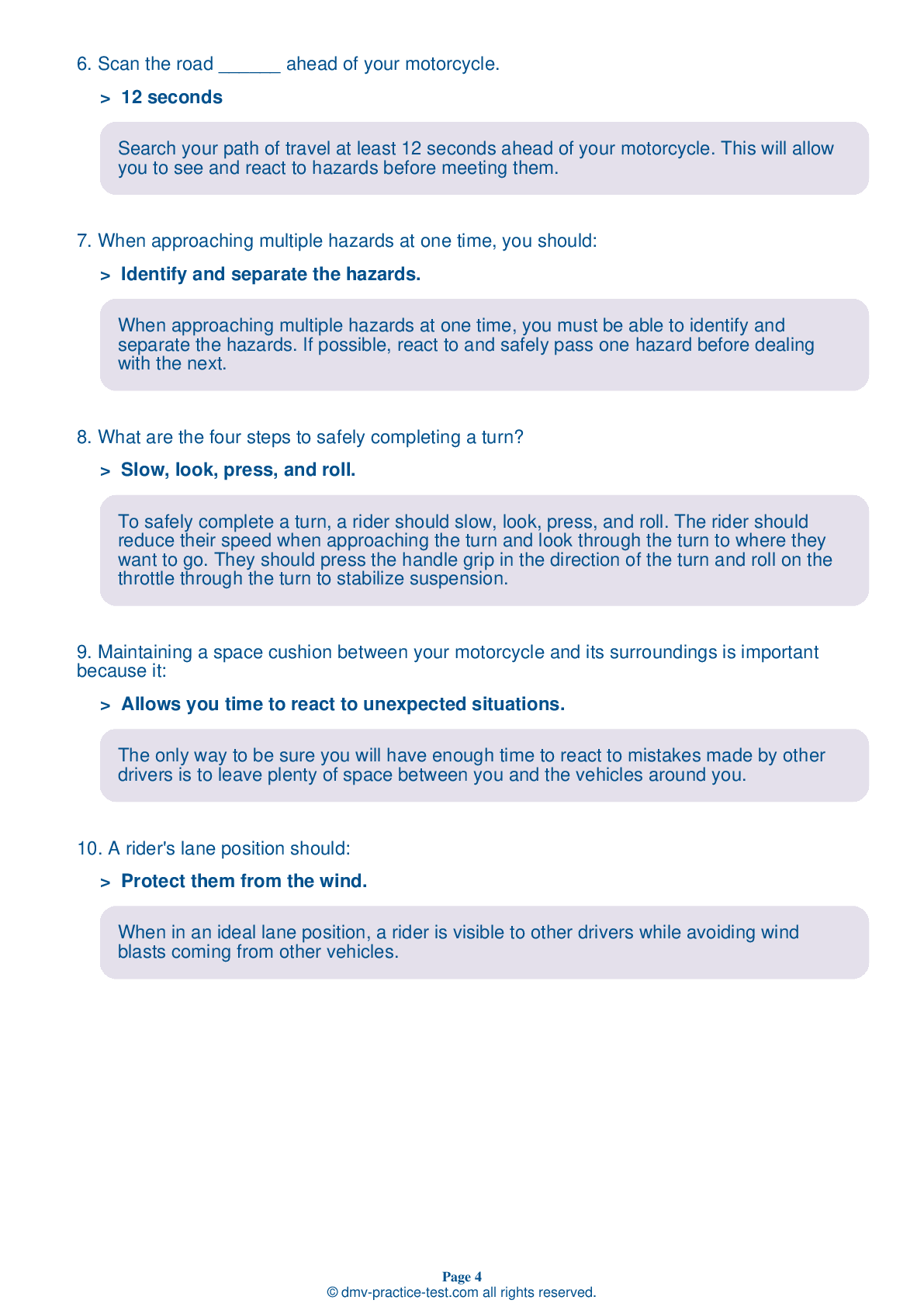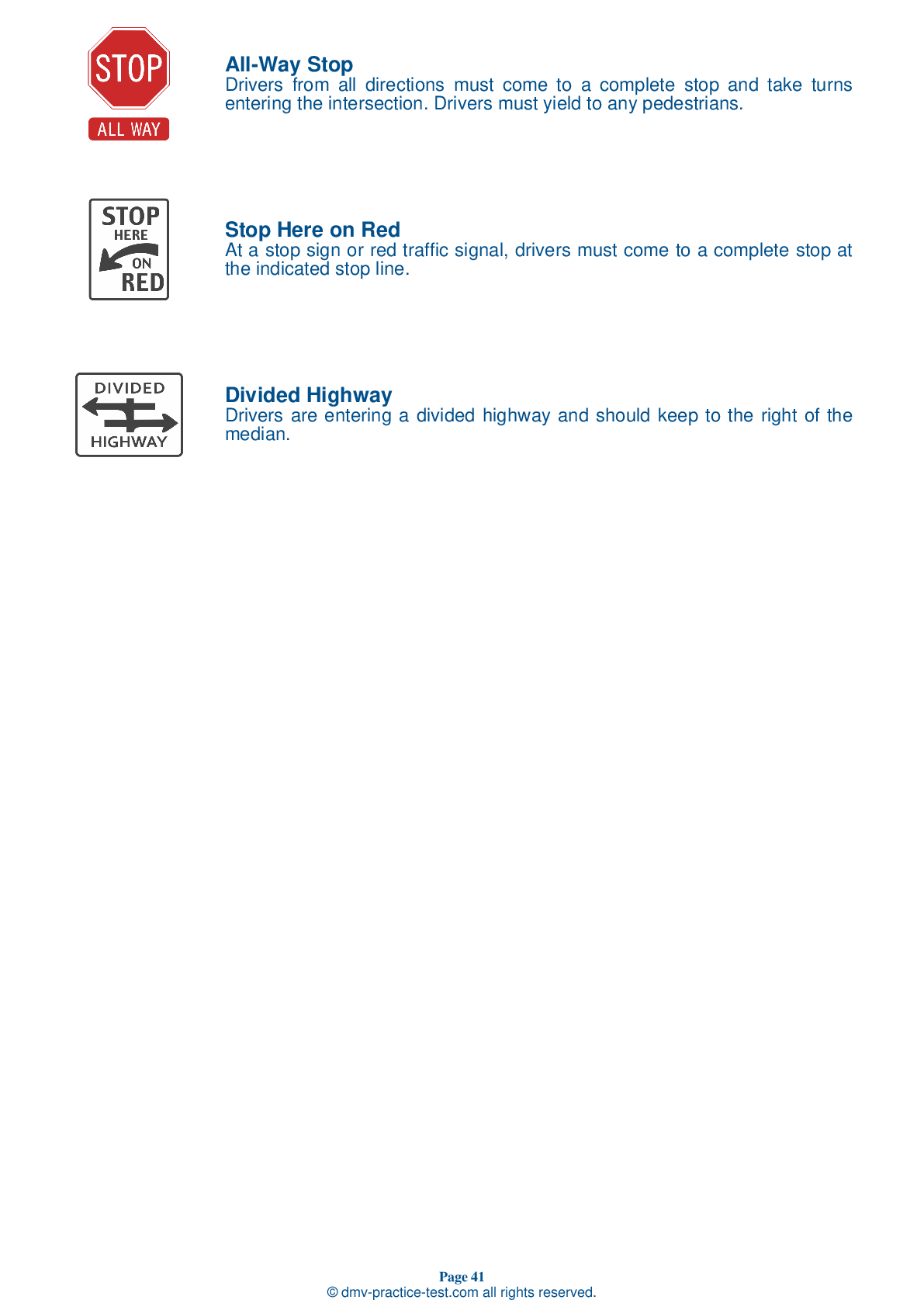Motorcycle Test | License DC 2025 | FREE Online Practice! #16 Page 2 of 4
Take this FREE motorcycle test (license in DC 2025) to check your knowledge of the road rules. To improve your results, download a motorcycle handbook online, study theory, and practice for free on our website. Still worried about how to get a motorcycle license in District Of Columbia in 2025? Check our website for more sample tests, train as much as possible, and boost your grades!
7 . Most crashes happen:
Most motorcycle crashes happen on trips that are shorter than five miles in length at speeds slower than 30 mph.
8 . When securing a load, you should place the load:
Secured loads should be low. Putting them too high up, such as on a sissy bar, can raise the motorcycle's center of gravity and upset its balance. Loads should be as evenly distributed as possible on each side of the motorcycle to avoid pulling the bike to one side.
9 . It is recommended that you take a curve by beginning on the outside of the curve, moving to the inside of the curve, and exiting on the outside of the curve. An alternate option is to:
If there is no traffic present, it is recommended that riders take a curve by beginning on the outside of the curve, moving to the inside of the curve, and exiting on the outside of the curve. An alternate option is to start the curve in the center of the lane and remain in the center throughout the curve. Be aware of changing road and traffic conditions and adjust as necessary.
10 . When preparing to pass a vehicle on the left, it is important to ride on the left side of your lane because:
When preparing to pass on the left, you should ride in the left portion of your lane. This lane position will increase your line of sight and make your more visible to oncoming traffic.
11 . To increase your line of sight when preparing to pass another vehicle on its left, you should:
When preparing to pass another vehicle on its left, you should ride in the left portion of your lane. This will increase your line of sight and make you more visible to oncoming traffic.
12 . A pre-ride inspection usually takes:
Conduct a thorough pre-ride inspection before every ride. It should usually take only a few minutes.
See the exact questions that will be on the 2025 District Of Columbia DMV exam.
99.2% of people who use the cheat sheet pass the FIRST TIME
Jeneen was tired of paying $5/gallon. She got herself a scooter that required the motorcycle license. She studyed the motorcycle test cheat sheet and passed her test the next day!
Christopher tells us how he knew nothing prior to obtaining the motorcycle study guide, and he only got one question wrong because he clicked on the wrong answer by mistake.



